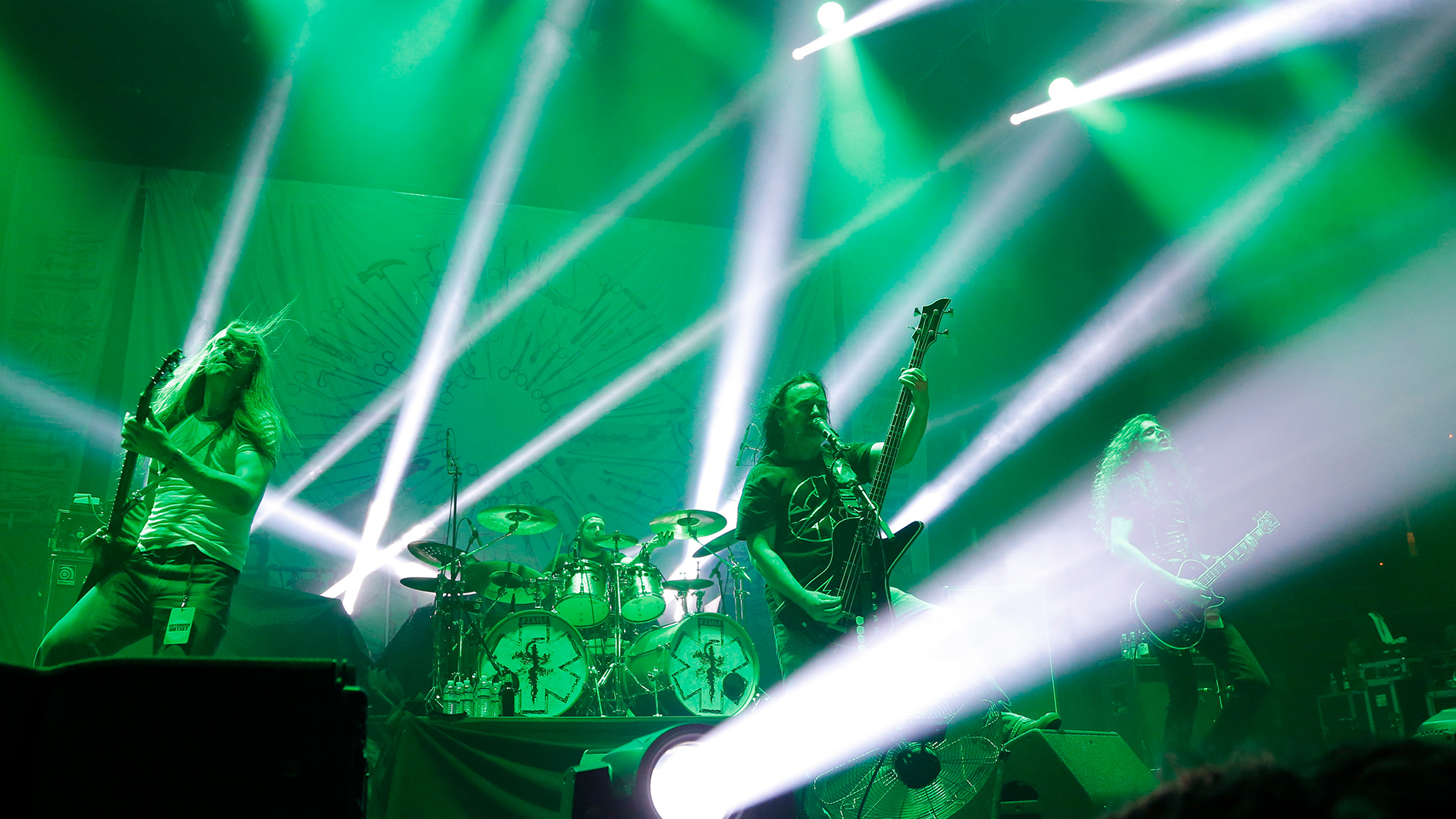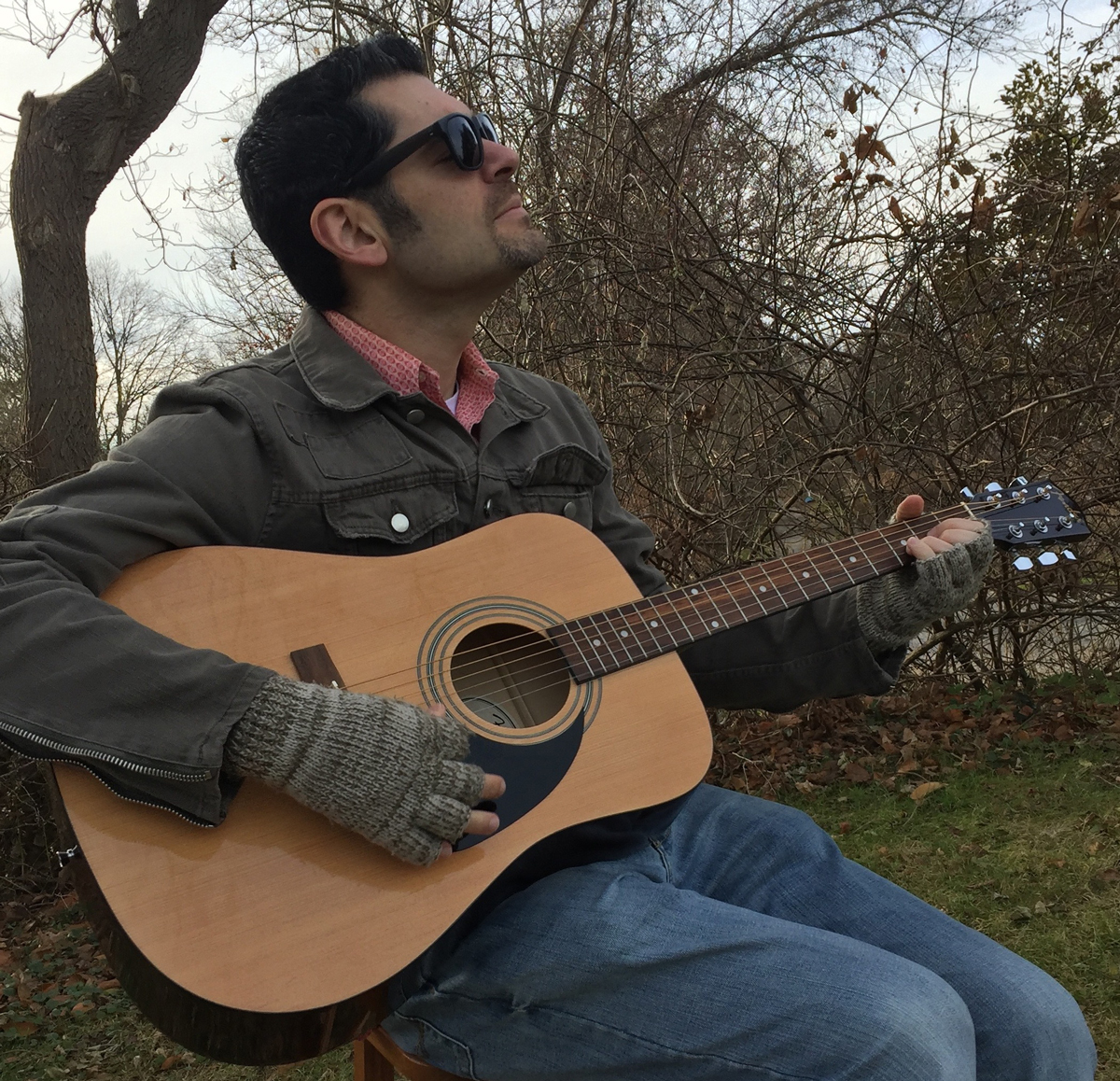Bill Steer: “If you play fingerstyle for half an hour, then use a plectrum, a whole world opens up – you really notice the things you can do with a pick”
The Carcass founding guitarist on the future of extreme metal, how he honed his ultra-fast rhythmic picking style, and the gear he used on the band's seventh album, Torn Arteries

Since the late ‘80s, Carcass have been pushing the boundaries of extreme metal. Often credited as one of several bands that helped create the grindcore subgenre (particularly with their 1988 full-length debut, Reek of Putrefaction), the band have been co-led by singer/bassist Jeff Walker and guitarist Bill Steer since their formation.
After an eight-year lay-off between studio albums, Carcass have returned with their seventh studio effort overall, Torn Arteries, whose title alone shows the boys are refusing to go soft at this stage of their career.
When Steer chatted with Guitar World shortly before the arrival of the album, he was up for discussing how he developed his rapid rhythm style, the complexity of Carcass’s music, and the extreme metal genre.
Which guitars, amps, and effects did you use on Torn Arteries?
“The guitar side of things, that’s easy – the rhythms were generally recorded with a ’77 Les Paul Custom. And the leads were generally done on one of my Melody Makers – I think they’re early ‘60s. Single-cutaway Melody Makers.
“I had a bit of work done to them so they’re viable to this type of music. My friend, the luthier Andrew Scrimshaw, worked on them and we changed the pickups. They almost became a slightly different instrument, but they play beautifully. So, when it comes to leads, they have to be the guitar.
“For amps, we blended. So, you’re partially hearing a high-gain amp – something along the lines of a Fender EVH head – and you’re also hearing that blended with an older Marshall. Just to get a little bit of the twang.
Get The Pick Newsletter
All the latest guitar news, interviews, lessons, reviews, deals and more, direct to your inbox!
“And with pedals, I don’t really like pedals too much. I’ll use them in the studio on a lead break, if you just want to get a different ‘vocal quality’ to the sound.
“When we were tracking the leads in Sweden, we used a really ancient delay unit that I think David Gilmour was known for using. And it’s not based on tape – it’s based on a disc or something. I wish I could remember the name of it, but I can’t – sorry!
“But there were other bits and pieces – whatever was lying around the studio that felt right at the time. But generally, when I play with a band in a live situation or rehearsals, I don’t want to be even looking at my feet – it just puts me off.”
That’s the best way to get into music – just start playing in a band. There’s a lot to be said for practicing at home and working on your chops, but that can’t be the bulk of what you do
How did you develop your precise and fast rhythm style? Did you practice to a metronome?
“People of my vintage didn’t even know what a metronome was! Even to this day, I would probably be quite crap being put against a metronome.
“But I guess I just went in the deep end as a kid and played with older musicians. For me, that’s the best way to get into music – just start playing in a band. There’s a lot to be said for practicing at home and working on your chops, but that can’t be the bulk of what you do.
“In terms of feel, groove, and timing, playing with a drummer is the best thing, I think. All that stuff just builds up over the years. There’s just a whole discipline behind extreme metal rhythm guitar. I’m probably one of the lazier players out there – some of these newer guys coming through are just insane.
“This may sound strange, but when I’m at home, I rarely play with a pick. I just pick up the guitar play – and sometimes that might be just 15 minutes or another day it might be an hour or two. You just go with what you feel.
“The reason I got into that was because when you played with fingerstyle for say, half an hour, and then you suddenly take a plectrum, a whole world opens up, and you really notice the things you can do with a pick.”

Which new songs would you say are the most intricate, guitar-wise?
“There’s some pretty crazy stuff in the first track [the title track], actually. As we would say in the UK, ‘There’s a lot of stuff that’s quite near the knuckle’ – where you’re playing at the very edge of what you’re able to.
“There’s a tune on the EP that came out before the album [The Living Dead At the Manchester Morgue from Despicable] that’s also got some crazy stuff.
“But really, that first track, there’s some stuff that happens in the middle that I think is quite a challenge to play live.”
When you play with a second guitarist in Carcass, do you work out both parts yourself or is it a collaboration?
“Really what happens is – going back many years, actually – I started writing for two guitars. I’d bring riffs into the bands and we’d start working on tunes, thinking already, ‘This part has to be harmonized. This is going to be in 3rds, 5ths, or a combination of 3rds, 4ths, 5ths or whatever.’
“You just kind of instinctively knew that it needed that kind of enhancements. So, really, we’d record our albums as a trio.
“In terms of the live situation, we have to have a second guitar player – just to bring out some of those parts. At times, it’s a headache – to go through all the parts in a song. I have the utmost admiration for everybody who has played the second guitar in this band – because there’s a lot of stuff to go through. It’s quite painstaking.
Extreme metal can always be taken further – that goes for any genre. But in terms of shock value and what people perceive as extremity, maybe not
“Tom Draper, who has played live with us the last couple of years, he’s been incredibly thorough. He’s made it as easy as possible for me, really, because he came in with a big folder – he’d written everything out. So anything that needed to be corrected could be done then and there. I was very impressed. I never had those organizational skills, myself.”
Do you think extreme metal has reached its limit, or can it be taken further?
“It can always be taken further – that goes for any genre. But in terms of shock value and what people perceive as extremity, maybe not.
“This music isn’t as dangerous as it was in 1989. You can’t escape that. There’s a time for everything, and this music was red hot – it was just dangerous and untamable when it came out. And here we are now in 2021.
“But I think that connects with what we were saying about some of the insane technical ability of some of the drummers and guitar players out there now. After a while, people start to quantify what’s going on – they find a system and they learn stuff. It’s impressive as physical achievements.
“But in terms of creativity, sometimes you’re not hearing music that really excites you. But then, I would say it’s because I’m 51. [Laughs]”
Has there ever been a Carcass lyric that made you feel a bit squeamish?
“Yeah! Jeff… I’m biased, but he’s one of the best lyricists out there.
“I won’t go into details, but there was one set of lyrics on the previous album [2013’s Surgical Steel] which I thought, ‘You really nailed that – that situation. I don’t know how many people will know what you’re talking about, but some of us do.’ And we were laughing our heads off – it was great.
“But some of the early Carcass lyrics, we were teenagers, and it was super-nihilistic. When you’re 17 or 18 and you’re angry at the world, that makes a lot of sense. But later in life, you’re maybe reflecting that it wasn’t the coolest thing to put out there.”
How does Torn Arteries compare to previous Carcass albums?
“Generally speaking with this band, we tended to make a different record each time. It’s not been extremely different – that we haven’t changed our identity – but there were steps forward.
“I feel like Surgical Steel was a strong record that we had a lot of fun making and I guess we can still stand behind it now, really. But it’s very frantic. We didn’t really have some of the production angles that we have on this record, because the music was heads down just craziness. Not much space, generally speaking.
“This record, some of the tunes do have space in them. For me, that’s a really natural, comfortable thing. But it does open up these other avenues, like where you have to think about, ‘Are we enhancing this the right way?’
“The guitar side of it, it was a lot of fun to record it, but it makes you more neurotic because of the options. I’d say the previous record, there wasn’t much more we could do. But this one, even now, I like the record, but you’re still kicking yourself, like, ‘I could have played that better.’ There’s just more air in the sound.”
- Torn Arteries arrives September 17 via Nuclear Blast.
Greg is a contributing writer at Guitar World. He has written for other outlets over the years, and has been lucky to interview some of his favorite all-time guitarists and bassists: Tony Iommi, Ace Frehley, Adrian Belew, Andy Summers, East Bay Ray, Billy Corgan, Alex Lifeson, Geddy Lee, Les Claypool, and Mike Watt, among others (and even took lessons from John Petrucci back in the summer of ’91!). He is the author of such books as Grunge Is Dead: The Oral History of Seattle Rock Music, Shredders: The Oral History of Speed Guitar (And More) and Touched by Magic: The Tommy Bolin Story.
“Jeff Beck used to love seeing him and Lenny play live – it feels full circle”: Lenny Kravitz guitarist Craig Ross has been playing Jeff Beck’s $490,000 Yardburst Les Paul onstage for an entire tour
“I said, ‘If I could have it my way it would sound like this,’ and I pulled the bass guitar out of the mix”: Why Prince removed the bassline from When Doves Cry









![John Mayer and Bob Weir [left] of Dead & Company photographed against a grey background. Mayer wears a blue overshirt and has his signature Silver Sky on his shoulder. Weir wears grey and a bolo tie.](https://cdn.mos.cms.futurecdn.net/C6niSAybzVCHoYcpJ8ZZgE.jpg)

![A black-and-white action shot of Sergeant Thunderhoof perform live: [from left] Mark Sayer, Dan Flitcroft, Jim Camp and Josh Gallop](https://cdn.mos.cms.futurecdn.net/am3UhJbsxAE239XRRZ8zC8.jpg)

